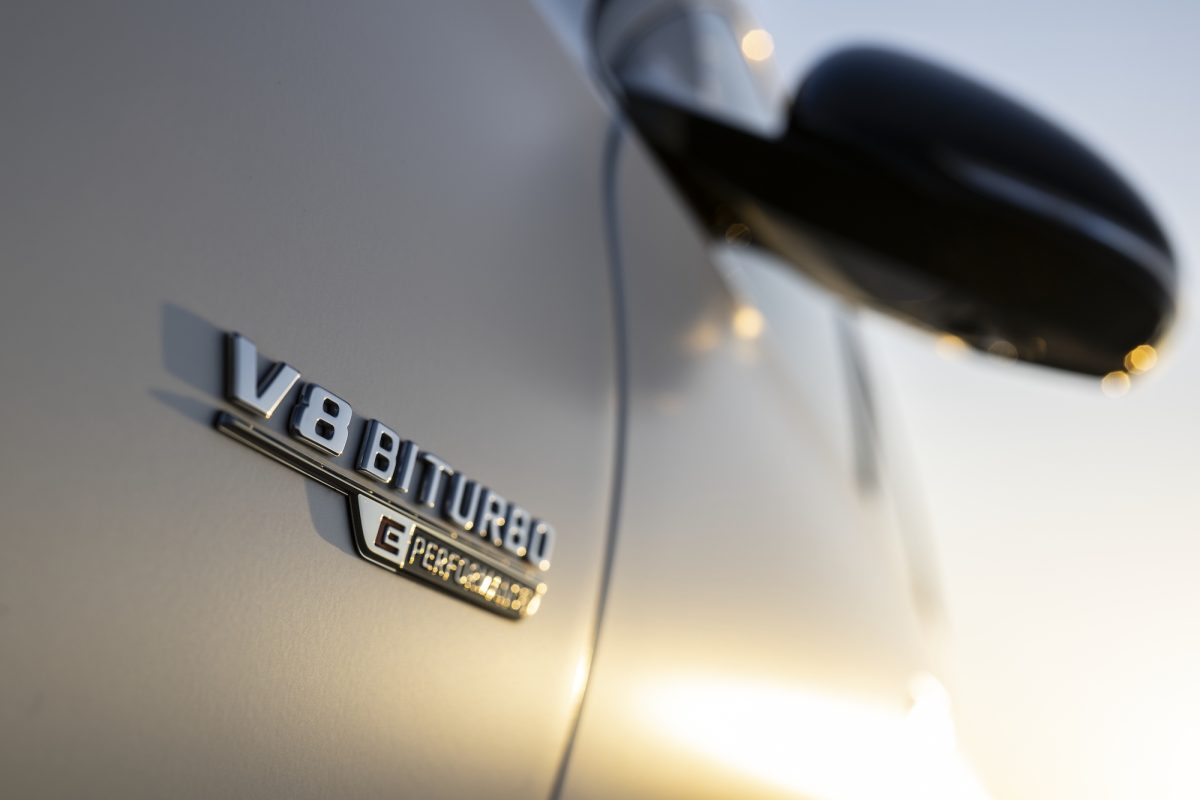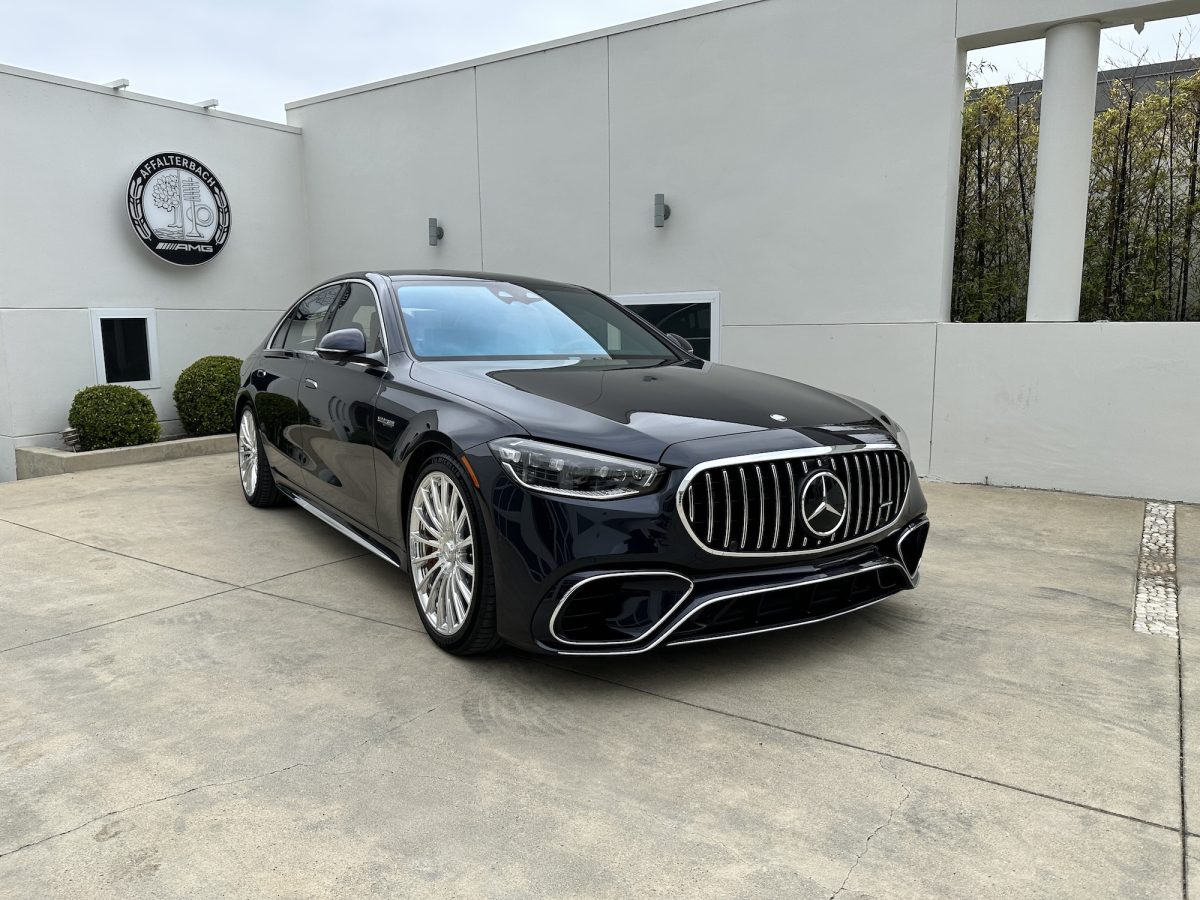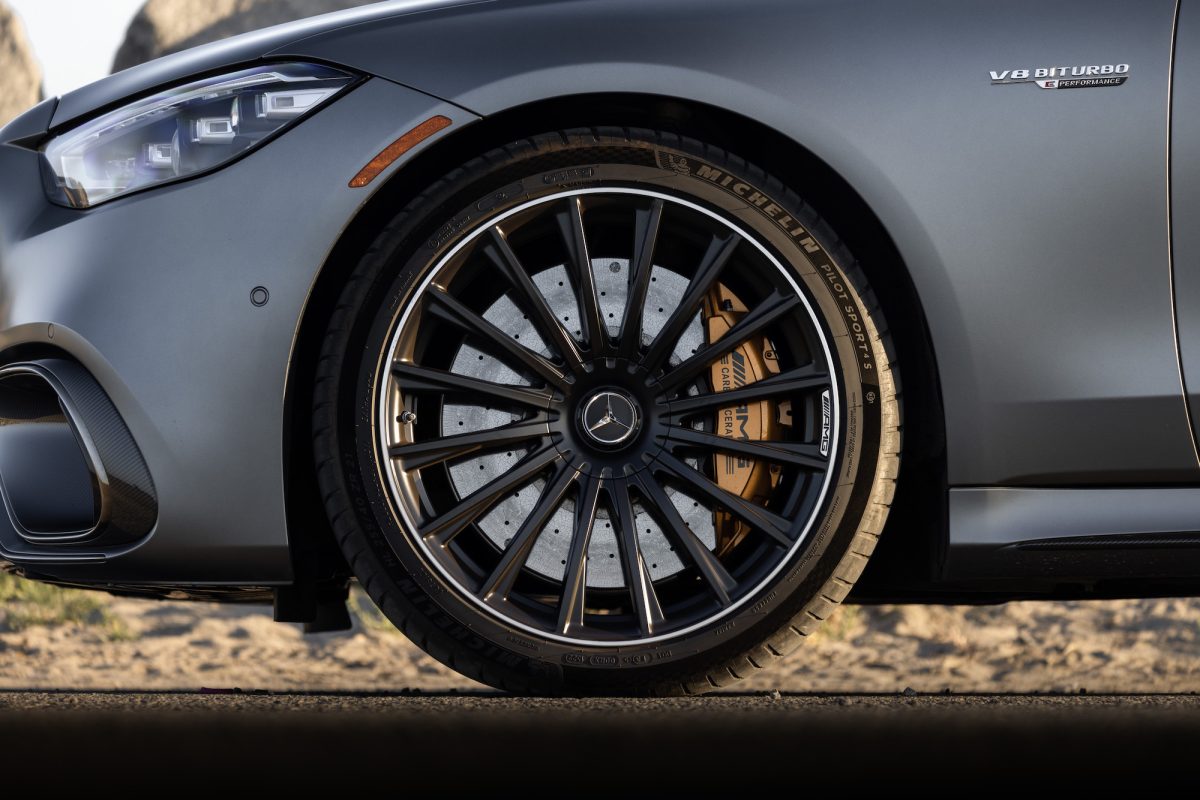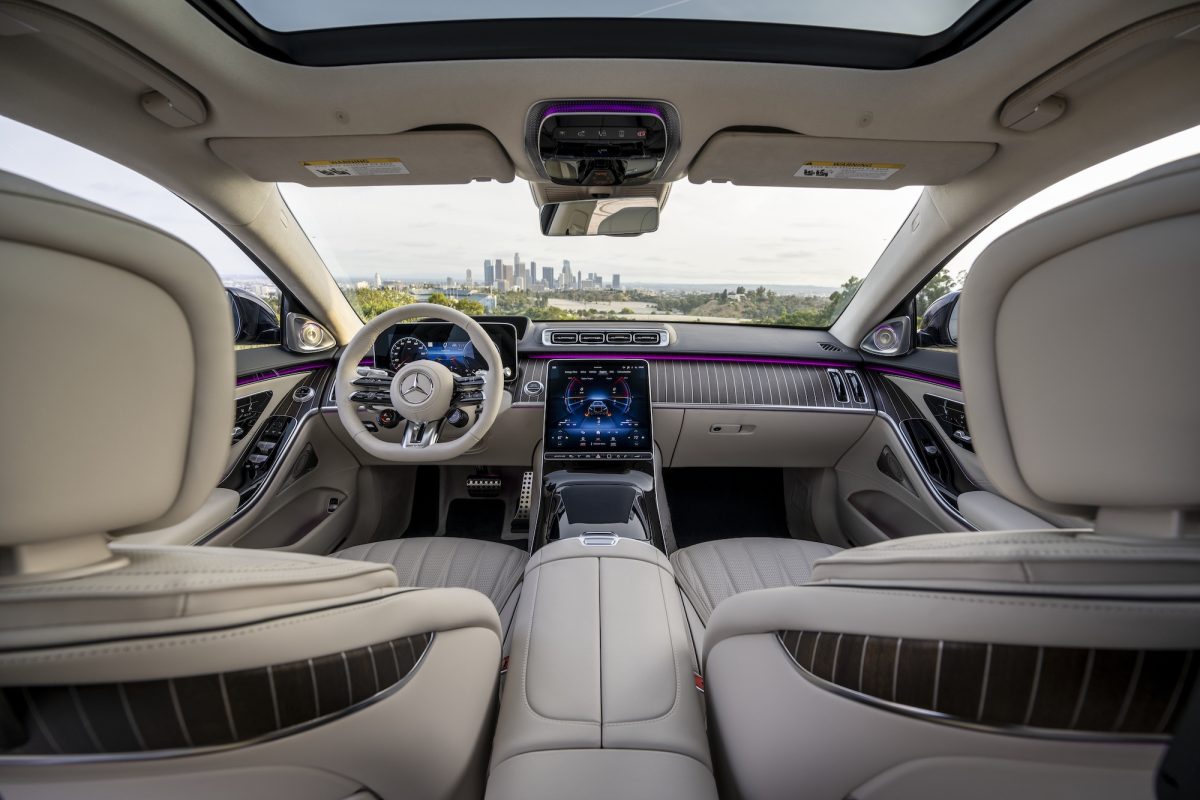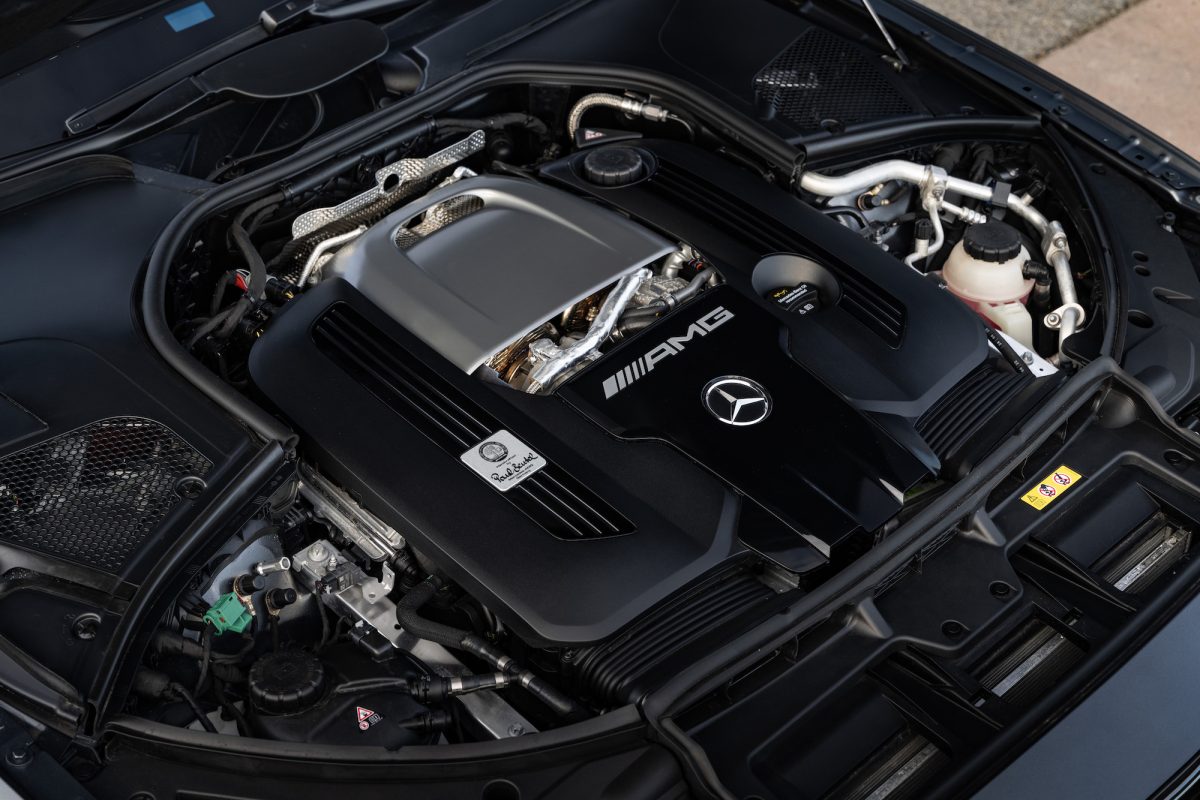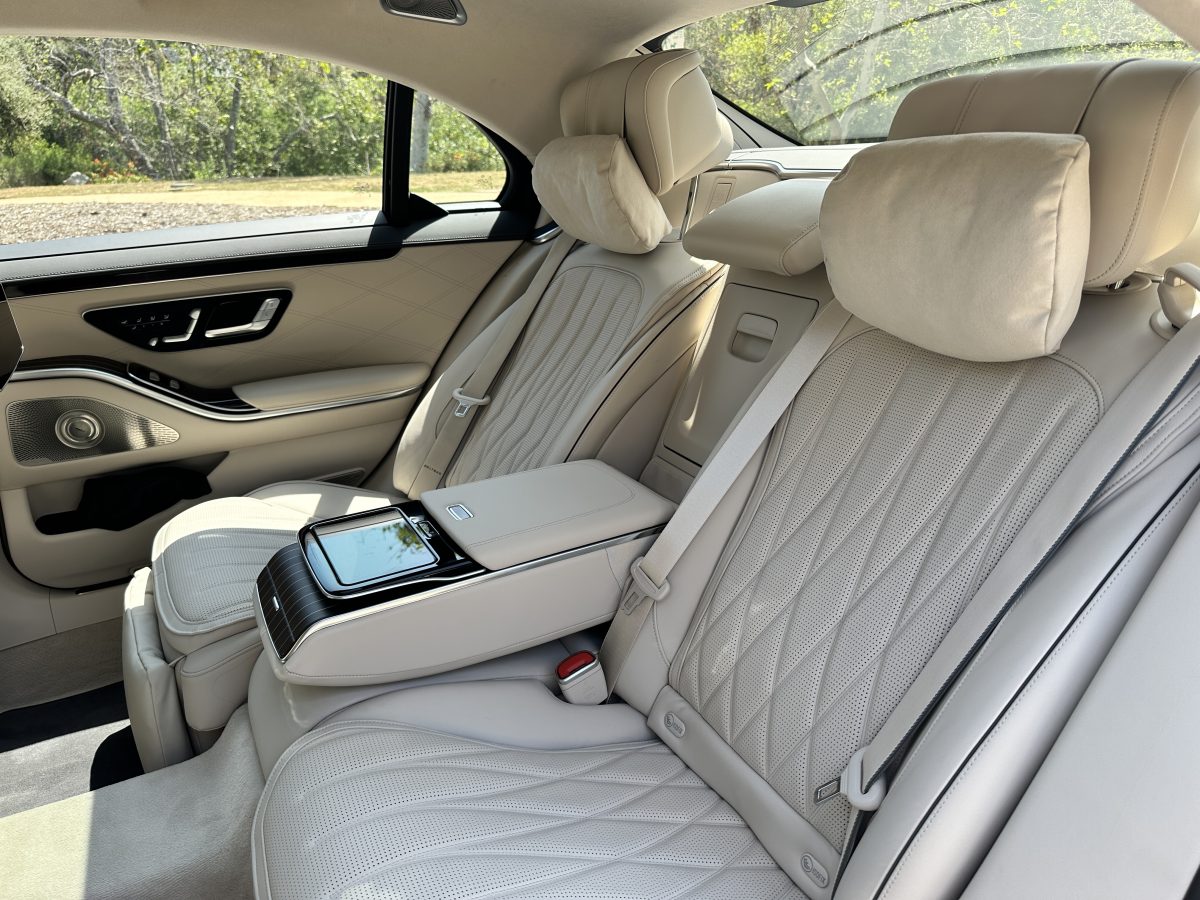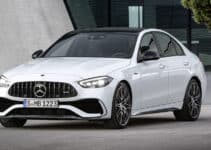“Win on Sunday, sell on Monday.” That was the popular marketing adage when motorsports and car sales were intricately intertwined. While a podium finish these days doesn’t necessarily translate into a bump in sales — with many consumers being more focused on fuel economy, looks and comfort — there is still a glimmer of truth to the phrase.
Take the new Mercedes-AMG S 63 E Performance hybrid, for instance. That’s a mouthful of a name to be sure, but Mercedes takes advantage of the battery technology in its podium-winning F1 car driven by Lewis Hamilton and George Russell to give us the most powerful S-Class ever. I’m talking 802 horsepower and a whopping 1,055 pound-feet of torque — in a luxury sedan.
The S 63 E Performance is a plug-in hybrid (not a BEV like the Mercedes EQS SUV). But don’t think you’ll get any kind of efficiency out of the powertrain. The 13.1 kWh battery only lasts for about 20 miles of all-electric range). Instead the battery, like that found in the Mercedes F1 car, is designed for maximum performance with high-capacity charging and discharging.
F1 battery technology, explained
The S 63 E Performance uses the same kind of lithium-ion cells as the race car and every one of the 1,200 cells is cooled individually by 3.7 gallons of a high-tech coolant. It starts in the bottom of the battery and is pumped around each cell to the top with a high-performance electric pump. It then passes through a heat exchanger, on to a low-temperature circuit and then finally to a cooler where the heat is released into the outside air. That results in a battery that remains at a constant 113 degrees Fahrenheit and stays primed for optimum performance, even if ambient temperatures are Montana-in-winter freezing or Death Valley hot.
This isn’t the first time Mercedes has employed this technology; it’s also featured in the rowdy AMG C 63 S E Performance and the AMG GT 63 S E Performance. Though the power delivery is just as quick on these models, the batteries have a capacity of 6.1 kWh and 6.7 kWh, respectively.
The S 63 has a unique operating strategy as well. The car can be driven in all-electric mode, but once the battery dwindles down to 25% or so capacity, it switches to Comfort mode to save a bit of battery should the driver want to spend some electrons carving some back country roads at full-bore. Other PHEVs allow drivers to knock the battery all the way down to nothing if they want. By always keeping some juice in the battery, the car is always primed for performance driving.
Fun times are available in every driving mode, accessed by what the company calls “kick down.” Think of it as a heavy space in the throttle. Everything above that space is easy cruising, but push your foot past and you’re rewarded with all the beans, no matter which drive mode you’re in.
When powering up from home the battery can only accept a charge of 3.6 kW, which is extraordinarily slow. However, the AMG-ified S-Class makes up for it with on-the-go charging. When driving in Sport or Sport+ modes the gas engine can supply 90 kW of power to the battery, and it can even accept surges of up to 140 kW on extremely heavy braking. The S 63 E Performance has four levels of regenerative braking, and though it never brings the car to a complete stop, the computer always defaults to regenerative braking and it keeps some regen even during mechanical braking or when drivers hit the limit and move into ABS.
Drive like Lewis
My day with the car starts with a leisurely drive on the Pacific Coast Highway in EV mode, which is accessed at the top end of the throttle.
The result is a sublime ride with smooth gear changes and little to no road and tire noise entering the cabin. Once I get to the hills behind Malibu, I appreciate that the car has saved some go-go beans for me as these canyons are begging to be carved.
I switch to Sport mode, press through the kickdown and I’ve reached 60 miles per hour in less than three and a half seconds. A sharp left hand turn is quickly approaching so I go heavy on the brakes and this 5,000-plus pound vehicle slows admirably with nary a twitch and without losing grip. I can feel the heft in the turns and despite the rear steering, the sensation is one of manhandling a wild stallion around a barrel. Yet somehow it still feels composed and agile. I guess this is what a luxury wild stallion feels like.
Mercedes’ in-car tech
There are pages in the MBUX infotainment system that tell me how much power I’m putting back into the battery with my braking, but my eyes are focused ahead on the next corner. I love how the nine-speed automatic transmission downshifts on braking, always putting me in the correct gear for corner exit, aided by the full force of the electric motor. This gal may be heavy, but she sure is fun.
I love the large 12.8-inch OLED center screen running Mercedes’ MBUX infotainment system. It defaults to the navigation screen and I can choose to overlay small shortcut icons to most-used features. Mercedes uses an augmented reality system when it comes to navigation, overlaying arrows on a video feed from the forward facing camera. It’s pretty trick.
Of course, wireless Apple CarPlay and Android Auto are here if you want to go old-school, but the Mercedes nav system is really good.
The 12.3-inch gauge cluster is similarly cool, with nifty 3D effects and plenty of ways to customize the layout. The head-up display can offer up as much information as you could possibly need and then some. I find it to be more distracting than anything else, but other drivers may find it useful.
Not your average hybrid layout
The hybrid system of the S 63 E Performance is also unique, although it doesn’t come from F1. In many hybrids, power from both the gas-powered engine and the electric motor go through the same transmission. Engineers call this a P2 hybrid. However, as good as the Mercedes transmission is, it’s not strong enough to handle the combined 1,055 pound-feet of torque. Enter the P3 hybrid.
Here the 4.0-liter twin-turbo V8 engine under the hood feeds its power into the nine-speed automatic while the electric motor, positioned on the rear axle, has its own two-speed transmission. Granted, that transmission stays in first gear most of the time, but at just under 90 miles per hour it shifts to second gear to ensure maximum torque all the up to the car’s top speed of 155 miles per hour.
The electric motor can also send variable amounts of power to the front wheels when driving in low-traction situations like rain or snow. Other hybrids, in addition to being of the P2 category, feature a fixed front to rear power distribution ratio. Further, by having the electric motor and transmission on the rear axle, the S 63 E Performance puts more weight on the back of the car for better weight distribution and ultimately, better handling.
S 63 E Performance interior: Best. Pillow. Ever.
Of course, none of this matters to me when I hand piloting duties over to my drive partner and test out the back seat. This is, after all, an S-Class with all the luxury features therein. With the push of a button the front passenger seat moves far forward and a foot rest extends from the rear seat. The seat back reclines and I can rest my head on the softest, most comforting pillow ever to touch my weary head. If Mercedes made these available for purchase I would gladly fork over plenty of greenbacks to take one of these pillows home. It’s like resting your head on a dozen soft and fluffy kittens — except without smooshing them.
The rear seats, like the front, feature heating and cooling as well as massage. There’s also a cooler in back here to keep beverages nice and frosty as well as a small tablet to control the MBUX infotainment system.
It is from here, lazing in the back seat, that I tell Mercedes’ natural language AI assistance that I’m cold. She complies by turning down the air conditioning. Ask her what she thinks of BMW or Audi and she may offer you a snarky come back. But not too snarky — her programmers are, after all, German.
When I give the car back to Mercedes at the end of the day my tummy is still fluttering with the rush of over 1,000 pound-feet of twist that has pushed me back against the seat all day. It’s not likely I’ll get to experience a car like this any time soon, let alone buy one for myself.
Mercedes has not announced pricing but the standard S 580e plug-in hybrid starts at $120,000 or so and one can easily add $30,000 in options. With all this fancy tech added to the AMG S 63 E Performance, I wouldn’t be surprised if we see a starting price of $160,000 or above.
If you’re hoping for a $7,500 federal tax credit to soften the blow, you’re out of luck. Currently only electrified cars that cost less than $55,000 are eligible for that nice little perk. However, you may still find state and local incentives of which to take advantage.
California residents are not eligible to slap the coveted carpool lane sticker on their AMG S 63 E Performance as it doesn’t have enough all-electric range. However, requirements vary by state so again, check your local laws.
Look for it in dealerships at the end of this year.
